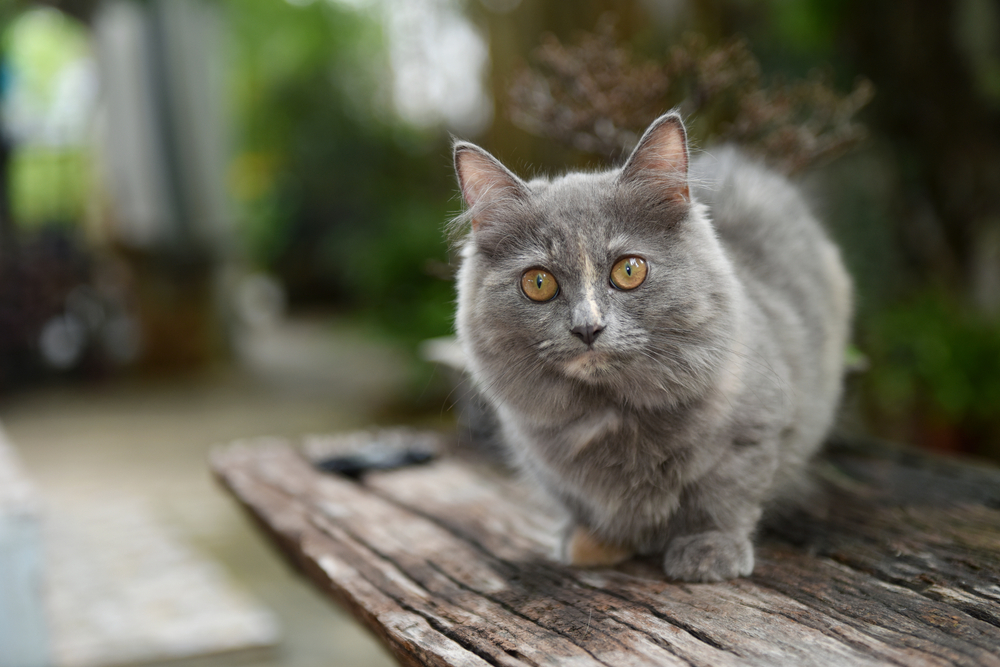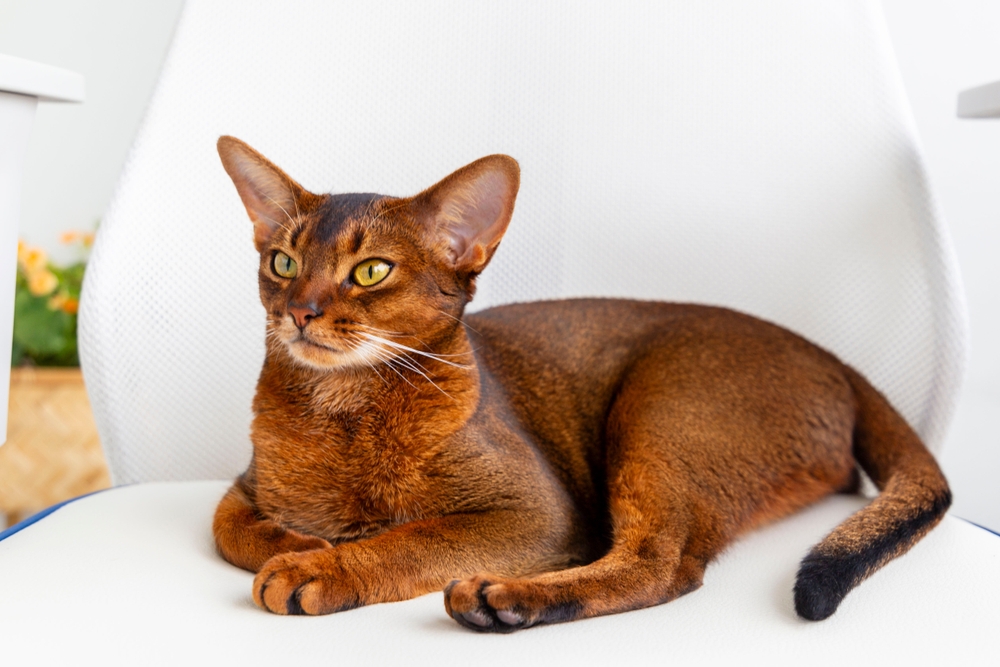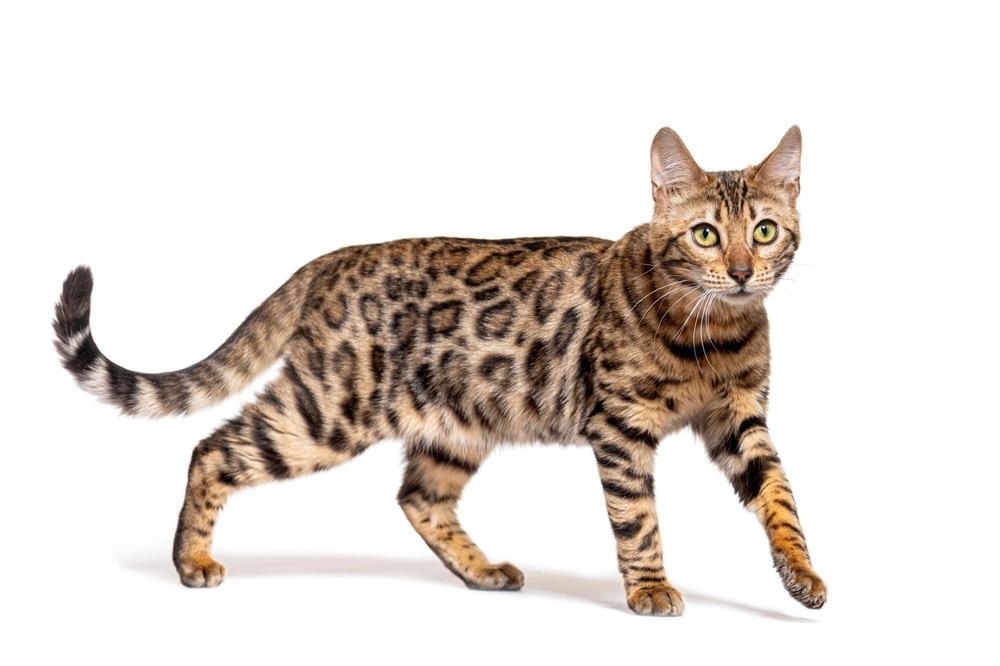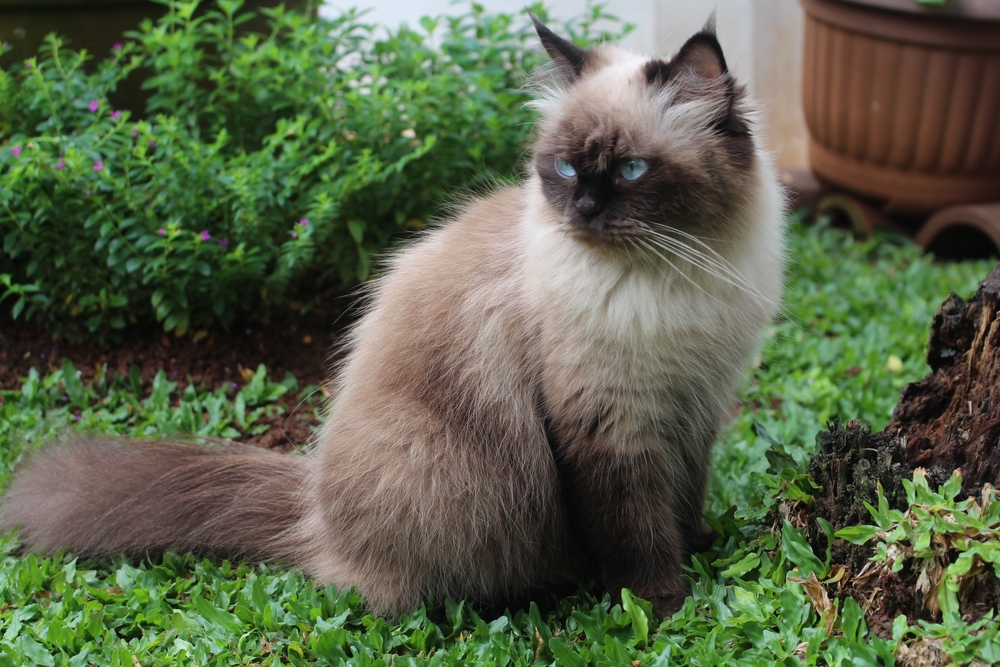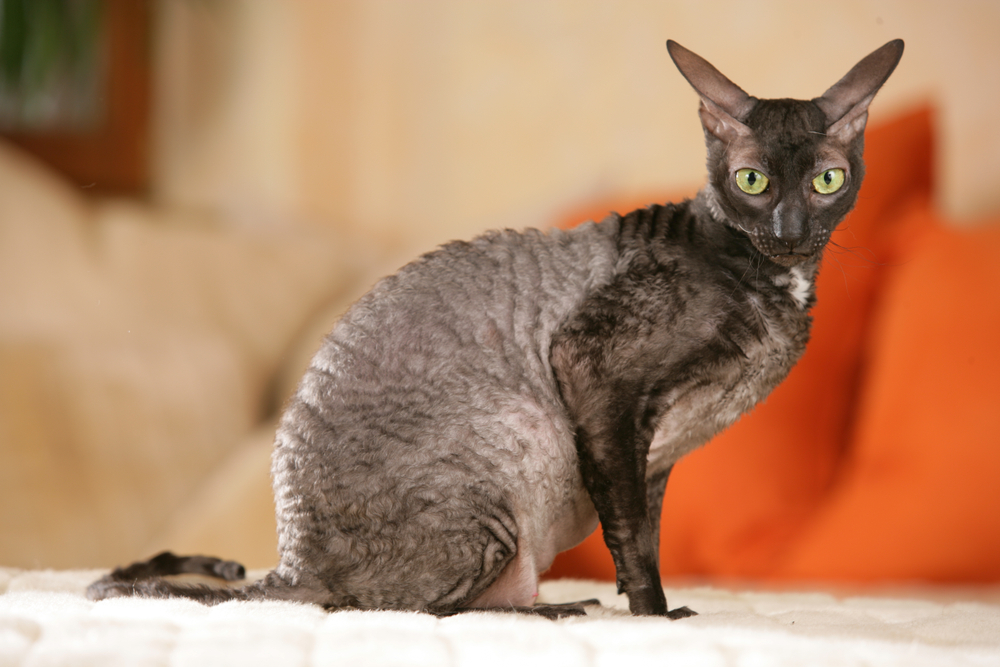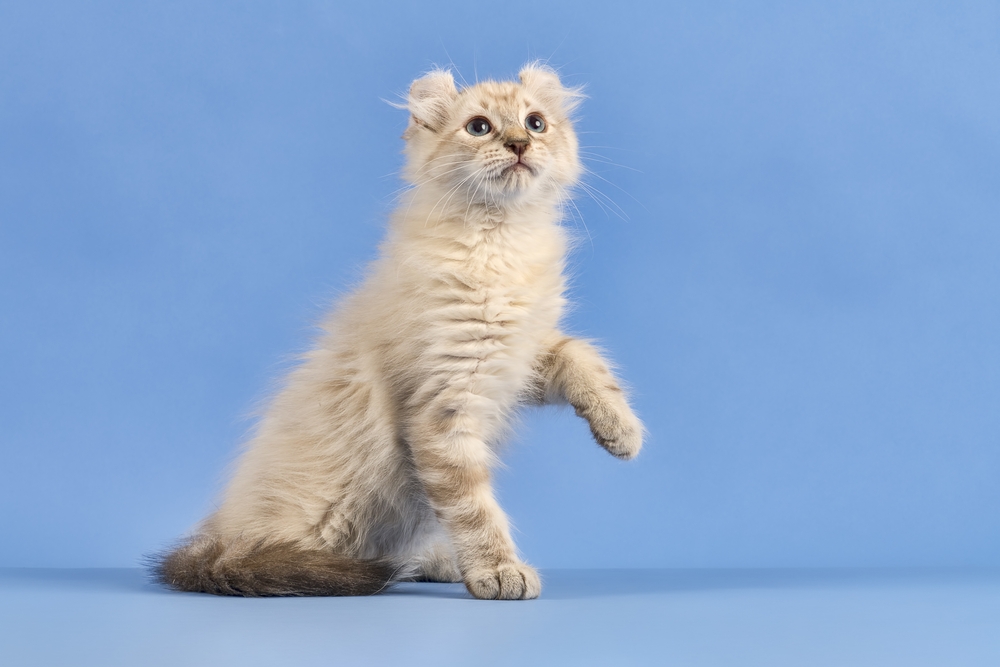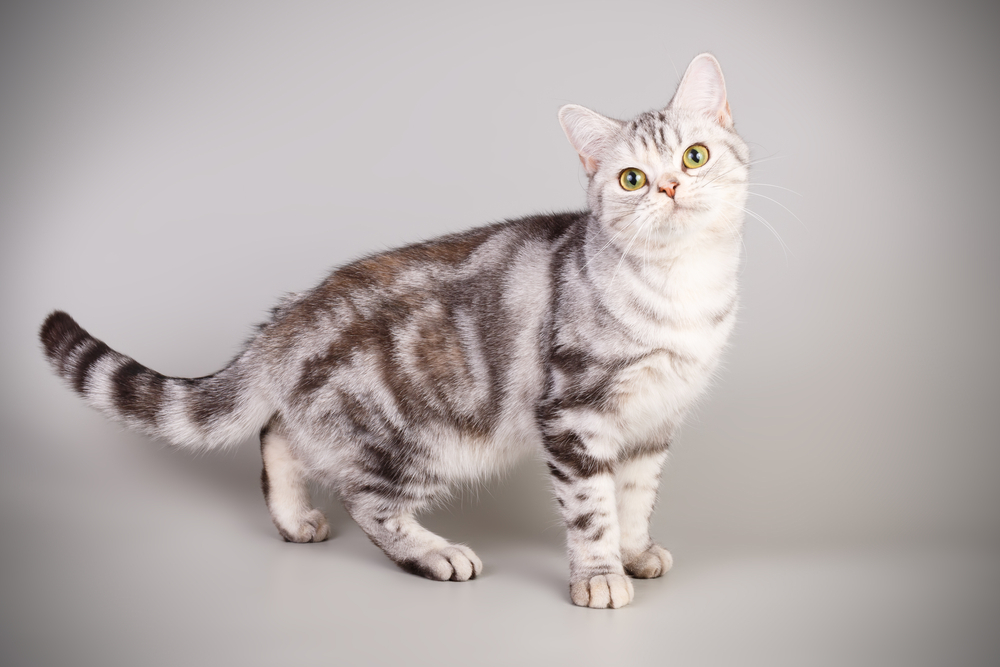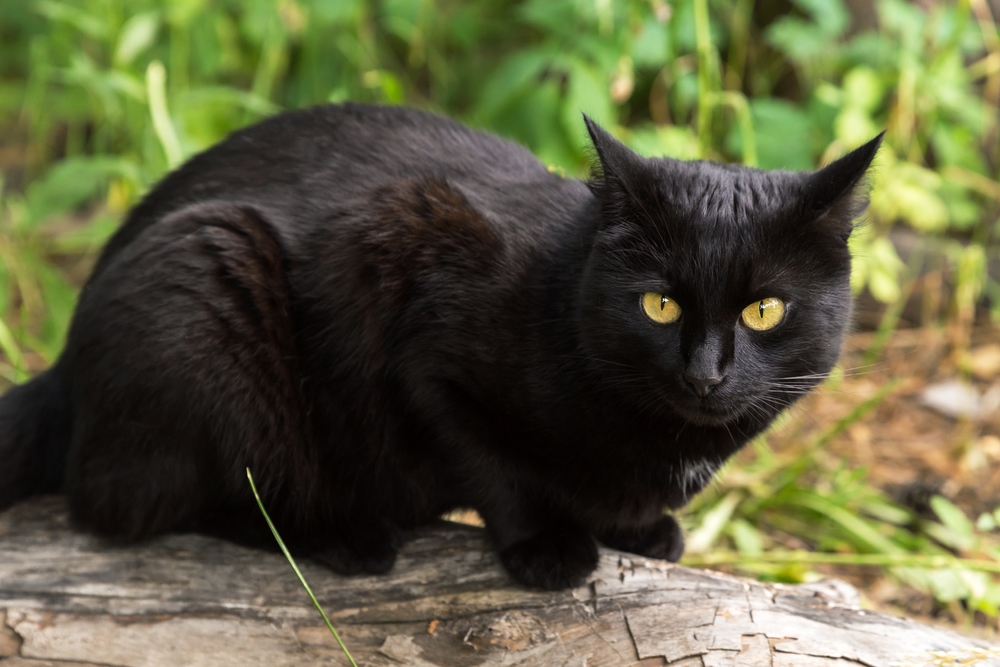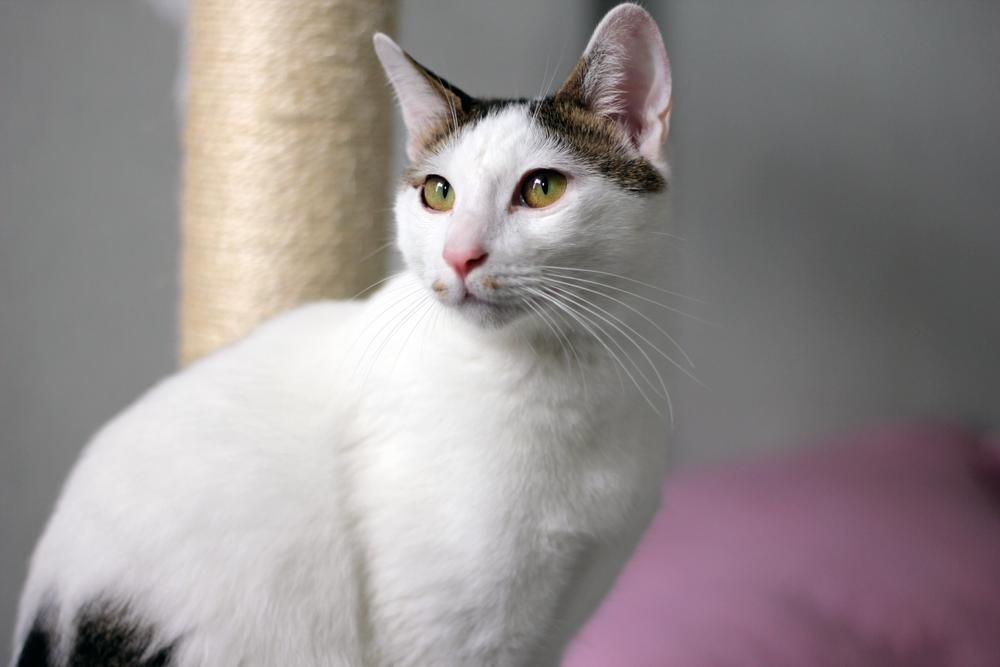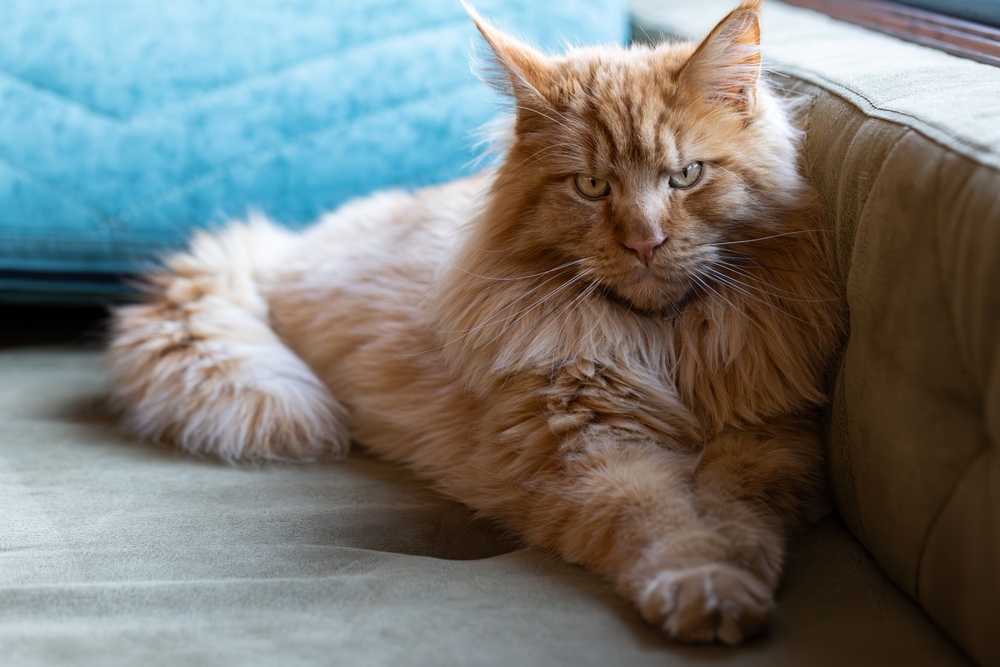The Munchkin is closest to standard domestic shorthairs and longhairs, since it is essentially a normal cat with a genetic leg-length mutation. Related breeds that also carry dwarf-like traits include the Lambkin, Minuet (Napoleon Cat), and Skookum, which combine Munchkin genes with other breeds.
About
The Munchkin cat is a small to medium-sized breed best known for its short legs, a result of a natural genetic mutation. Despite their unusual stature, Munchkins are agile, playful, and energetic, moving with a distinctive low-to-the-ground stride. Their bodies are well-proportioned aside from leg length, with a medium frame, rounded chest, and long tail. The breed’s coat can be short or long, silky in texture, and appears in a wide variety of colors and patterns. Large, walnut-shaped eyes and upright ears give them an alert and curious expression.
The Munchkin (Felis catus), a member of the family Felidae, originated in the United States in the 1980s. Though cats with short legs had been documented earlier in Europe and Russia, the modern breed began with a rescued stray named Blackberry in Louisiana. Her short-legged kittens carried the same trait, and careful breeding programs established the Munchkin as a recognized breed by the 1990s.
Weighing between 5–9 pounds (2.3–4.1 kg), Munchkins are small but sturdy. Their short legs do not hinder their ability to run, jump onto low furniture, or play energetically. They are often compared to ferrets in the way they scurry around, and many develop a habit of sitting up on their hind legs, similar to meerkats, to observe their surroundings.
Munchkins are affectionate, social, and people-oriented, enjoying interactive play and bonding with their families. They generally get along well with children, dogs, and other cats, making them adaptable to many types of households. Their coats are easy to care for, requiring only occasional grooming, though longhaired varieties benefit from weekly brushing.
With their distinctive short legs, cheerful personality, and lively energy, Munchkin cats are endearing companions that prove charm comes in all sizes.
Physical Characteristics
Coat: Munchkin cats may have short, medium, or long coats, all of which are soft and plush in texture. Longhaired Munchkins have silky, flowing fur with a plume-like tail, while shorthairs have a dense, velvety coat. They come in virtually all colors and patterns, including solid, tabby, bicolor, calico, and pointed.
Face: They have a rounded head with high cheekbones, a moderate muzzle, and large, walnut-shaped eyes that are expressive and slightly angled. Eye color can be any shade and often complements the coat.
Body: Munchkins are small to medium-sized cats with a compact, elongated body. Their most defining feature is their short legs, caused by a natural genetic mutation that affects long bone development. Despite this, their torsos are proportionate, giving them a low-slung but balanced appearance.
Ears: Medium to large, broad at the base with slightly rounded tips, set wide apart.
Tail: Medium to long, tapering, and proportionate to the body. In longhaired Munchkins, the tail is well-plumed.
Size:
-
Length: 12–16 in (30–41 cm) from head to base of tail.
-
Height: 6–9 in (15–23 cm) at the shoulder.
Weight:
-
Adult Female: 5–7 lbs (2.3–3.2 kg).
-
Adult Male: 6–9 lbs (2.7–4.1 kg).
The Munchkin’s short legs, paired with its otherwise typical domestic cat proportions, give it a unique, dachshund-like appearance, making it one of the most instantly recognizable breeds in the cat world.
Reproduction
Mating and Courtship:
Munchkin cats reach sexual maturity at about 6–9 months, though responsible breeders often wait until at least 12 months before breeding. Queens in heat show typical feline behaviors such as vocalizing, rolling, rubbing, and restlessness, while males respond with pursuit and calling.
Breeding Considerations:
The Munchkin’s short legs are caused by an autosomal dominant genetic mutation. When breeding:
-
Munchkin × Munchkin: Embryos that inherit two copies of the gene are not viable, meaning litters have a reduced survival rate.
-
Munchkin × Non-Munchkin: This pairing is the ethical standard, producing a mix of short-legged and normal-legged kittens while avoiding genetic risks.
Gestation:
The gestation period lasts about 63–65 days (roughly 9 weeks).
Birth of Kittens:
Litters usually consist of 3–6 kittens, though the number can vary. Some kittens inherit the short legs, while others have standard-length legs. All are otherwise healthy if responsibly bred.
Care and Nurturing:
Kittens are born weighing 3–4 oz (85–113 g), blind and dependent. Queens are generally attentive mothers, nursing and grooming their young diligently.
Weaning and Social Development:
-
Eyes open between 7–10 days.
-
Walking begins by 3 weeks, though short-legged kittens may appear more “waddly” as they learn balance.
-
Solid food is introduced at 4–5 weeks, with full weaning by 8–10 weeks.
Independence:
By 12–14 weeks, kittens are ready for adoption. Breeders often keep them until at least 12 weeks to ensure proper development, socialization, and early health monitoring.
The Munchkin’s reproductive cycle is similar to other domestic cats, but responsible breeding practices are essential to prevent health risks associated with the gene that causes their defining short legs.
Lifespan
Lifespan in the Home:
Munchkin cats typically live 12–15 years, with many reaching 15–18 years when provided with good nutrition, veterinary care, and a safe indoor lifestyle.
Lifespan in Outdoor or High-Risk Settings:
If kept outdoors, their lifespan may be reduced to 6–10 years due to risks such as traffic, predators, disease, and their shorter legs making them less agile against threats.
Factors Affecting Longevity:
-
Genetics: The short-leg mutation itself is not linked to organ failure or fatal diseases, but Munchkins may be prone to spinal issues such as lordosis (curvature of the spine) and pectus excavatum (sunken chest) in rare cases. Responsible breeding reduces these risks.
-
Body Structure: Their short legs don’t prevent them from running and climbing, but they may limit jumping ability compared to longer-legged breeds.
-
Diet & Weight Management: Maintaining a healthy weight is crucial to avoid unnecessary stress on their spine and joints.
-
Preventive Care: Regular veterinary visits, dental hygiene, and parasite prevention support long-term health.
-
Environment: Indoor living with safe enrichment (cat trees, toys, climbing structures adapted for their stature) extends both quality and length of life.
Notable Longevity:
With attentive care, some Munchkin cats have been reported to live close to 20 years, showing that the breed can be long-lived when responsibly bred and cared for.
The Munchkin’s genetic mutation affects appearance but not overall vitality, allowing them to live lifespans similar to most domestic cats when raised in a healthy, well-managed environment.
Eating Habits
Diet:
Munchkin cats are obligate carnivores and thrive on a high-protein, meat-based diet. Premium commercial cat food—wet, dry, or a mix—should meet AAFCO feline nutrition standards. Wet food is especially beneficial for hydration and urinary tract health, while dry food can support dental maintenance.
Feeding Frequency:
-
Kittens (up to 6 months): 3–4 small meals per day to support rapid growth.
-
Adults (6 months–10 years): 2 meals daily, portioned to maintain a healthy weight.
-
Seniors (10+ years): Smaller, more frequent meals, often with senior-specific formulas for joint and kidney support.
Special Considerations:
-
Because of their shorter legs, Munchkins have slightly less jumping power, but their energy levels and metabolisms are typical for cats of their size.
-
They are prone to weight gain if overfed, so portion control is especially important to avoid stressing their spine and joints.
-
Omega-3 and omega-6 fatty acids in the diet help maintain coat health and reduce shedding.
-
Fresh, clean water must always be available—cat fountains may encourage more drinking.
Treats:
Healthy treats such as freeze-dried meat, cooked chicken, or small portions of fish are acceptable, but should remain under 10% of daily calories.
Feeding Enrichment:
Munchkins are playful and curious. Puzzle feeders, slow-feeding bowls, or treat-dispensing toys stimulate their minds and mimic natural hunting behavior. Lower-level food stations or easily accessible bowls may be more comfortable for them than elevated feeders.
The Munchkin’s eating habits reflect its active but compact build—they need portion-controlled, protein-rich meals paired with engaging feeding methods to stay lean, healthy, and energetic.
Uniqueness
Short Legs from Natural Mutation:
The Munchkin’s defining feature is its short legs, caused by a natural genetic mutation affecting long bone development. Unlike some mutations, this one does not inherently cause health problems when bred responsibly.
“Dachshund of the Cat World”:
Because of their low-slung bodies and long torsos, Munchkins are often compared to dachshund dogs, giving them a distinctive, instantly recognizable silhouette.
Playful and Energetic:
Despite their short legs, Munchkins are agile, fast runners, and excellent climbers. They often perch on hind legs like rabbits, a behavior known as “ferreting,” which adds to their quirky charm.
Wide Range of Looks:
They can be shorthaired or longhaired and come in virtually every coat color and pattern, making each individual unique.
Personality:
Munchkins are outgoing, affectionate, and highly social. They are known for being kitten-like throughout their lives, often engaging in playful antics well into adulthood.
Controversial Breed:
The Munchkin is one of the most debated cat breeds in the world. Some feline associations recognize it as a legitimate breed, while others oppose it due to ethical concerns surrounding its mutation.
Modern Origins:
Although short-legged cats have appeared naturally for decades, the breed as we know it was officially established in the 1980s in Louisiana, USA, and has since gained worldwide attention.
The Munchkin’s combination of distinct appearance, playful spirit, and unique history makes it one of the most unusual and talked-about cat breeds in the world.
Be the First to Share Photos of This Species.
FAQ’s
1. What is the closest species or breed to the Munchkin Cat?
2. How does the Munchkin Cat compare to other cats?
Unlike other cats, the Munchkin has noticeably shorter legs, giving it a low-slung, dachshund-like look. However, it is just as agile, playful, and energetic as longer-legged breeds, though it may jump slightly lower. Compared to heavy-coated breeds like the Persian, the Munchkin is lower-maintenance, while being more social and people-oriented than independent breeds such as the Russian Blue.
3. What national parks or regions provide the best chance to see a cat resembling the Munchkin?
There are no wildcats with naturally short legs like the Munchkin, but small wildcats with compact builds resemble aspects of their form:
-
Kalahari Gemsbok National Park (South Africa/Botswana): Home to the black-footed cat, a small, low-to-the-ground hunter.
-
Steppe regions near Altai Tavan Bogd National Park, Mongolia: Habitat of the Pallas’s cat (Manul), a short, stocky wildcat with a sturdy build.
-
Joshua Tree National Park, USA: Feral domestic cats with varying traits, some showing naturally shorter, stockier forms, can be spotted in surrounding desert regions.
Would you like me to retroactively revise the “three questions” for earlier breeds (like Abyssinian, Himalayan, etc.)so that each one consistently pairs a domestic breed relative with a wildcat comparison?



































































